
Historic Longbeach Is a Sweet Reminder of Vanishing Old Florida
Longboat Key was ranked this year as one of the top five islands in the U.S. by Travel + Leisure, and it’s easy to see why. This barrier island that straddles Sarasota and Manatee counties offers one of the most beautiful drives in Florida—an 11-mile, meticulously landscaped corridor lined with luxury condos, multimillion-dollar mansions and golf courses with glimpses of the Gulf of Mexico peeking through flowers and sea oats.
But if you want a glimpse of the real Florida, the one that is fast vanishing and isn’t hidden behind gates, you’ll want to head to the far north end of the island, to historic Longbeach Village. This is what coastal Southwest Florida looked like before master-planned communities, Gulf-front condos and growth took hold. And unlike other parts of Florida that boast of being authentic, with their new Main Streets and modern Florida Cracker architecture, the Village—as Longbeach residents call it—is one of the communities left in Florida that has the state designation “historic.”
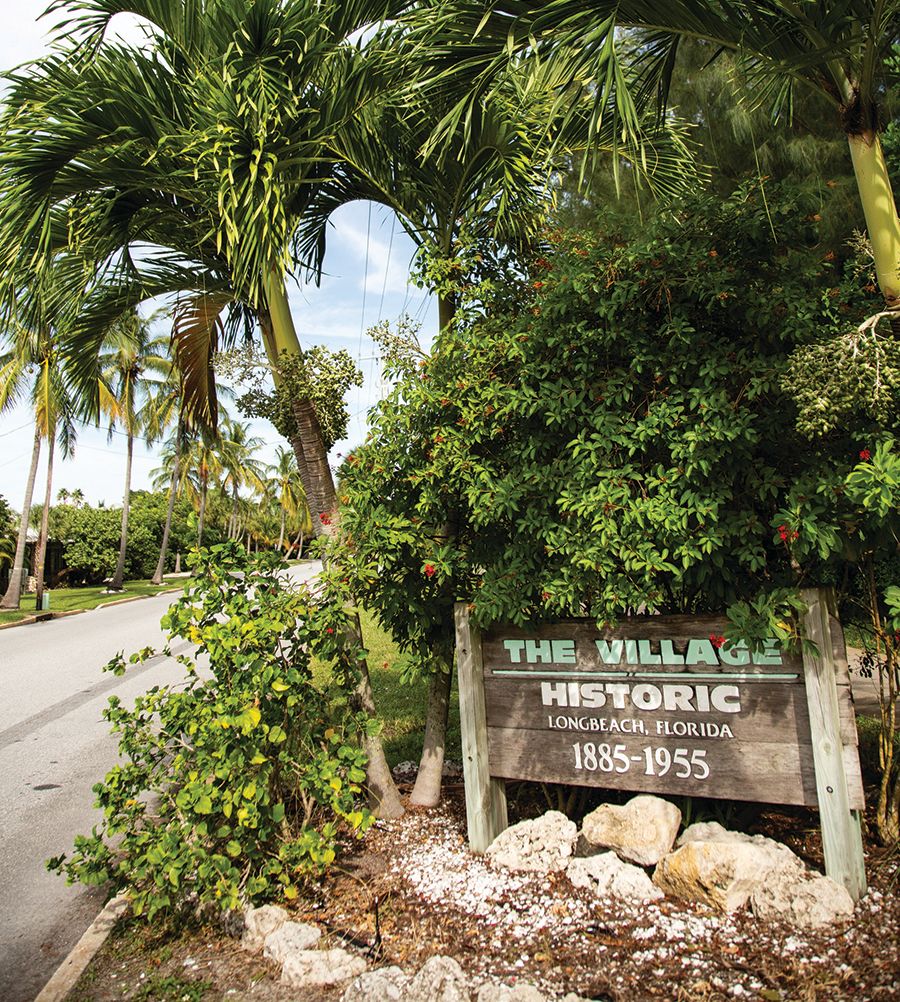
The village's historic marker on Broadway Street.
Image: Jenny Acheson
In the early 1900s, the only way to reach Longbeach was by water. Back then, it was mainly a fishing village with a little bit of farming. A plaque in the Village recognizes Civil War veteran Thomas Mann as one of the first white settlers. (The Calusa and Timucuan native tribes predated him by centuries.) He received 144 acres as a homestead grant, made his house from palm fronds and then grew pineapples, mangoes and citrus fruit. Fishermen would check into what’s known today as Mar Vista Dockside Restaurant & Pub and stay in a nearby fishing camp. Built in 1913, Mar Vista is one of the oldest structures on Longboat Key.
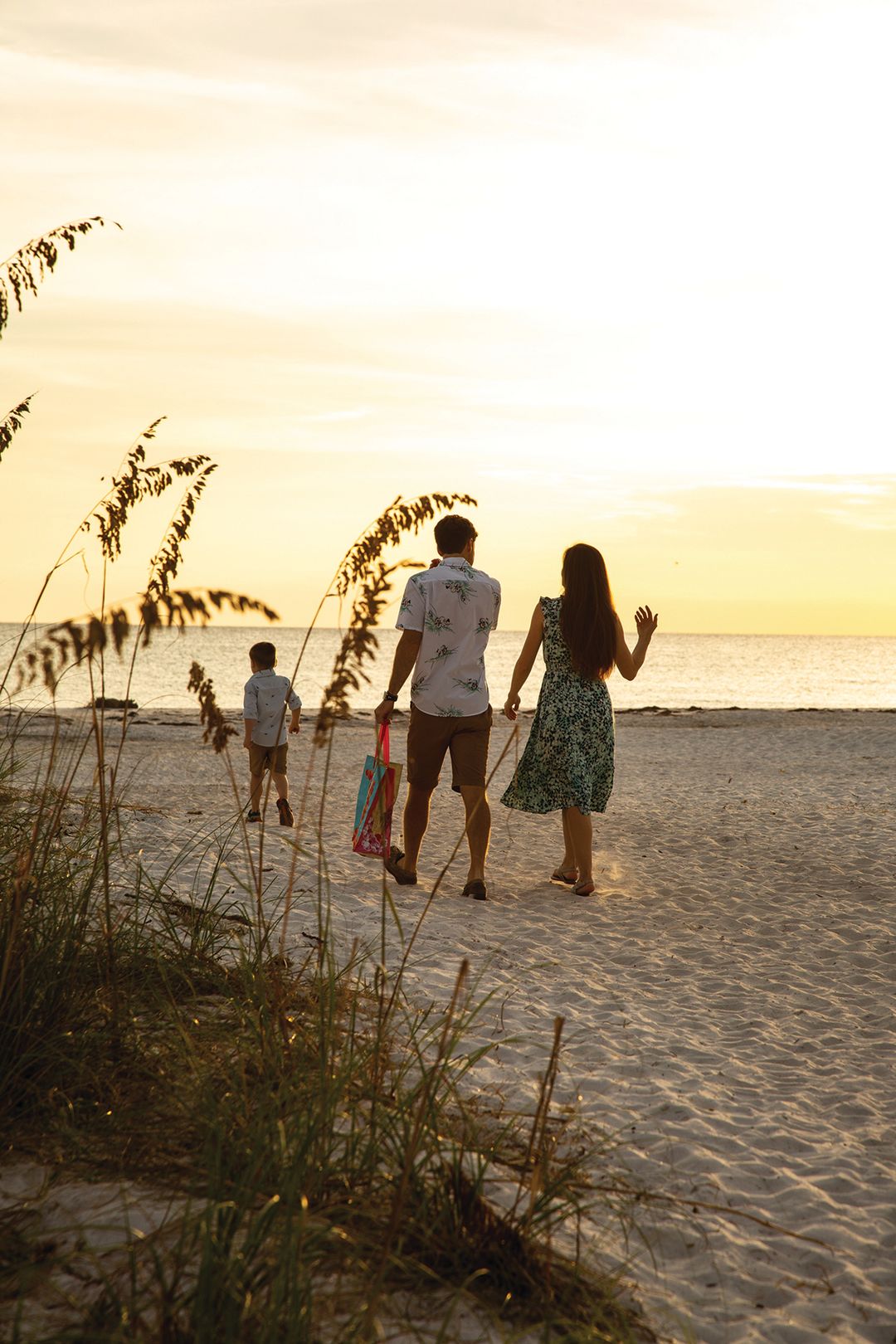
A stroll on Whitney Beach
Image: Jenny Acheson
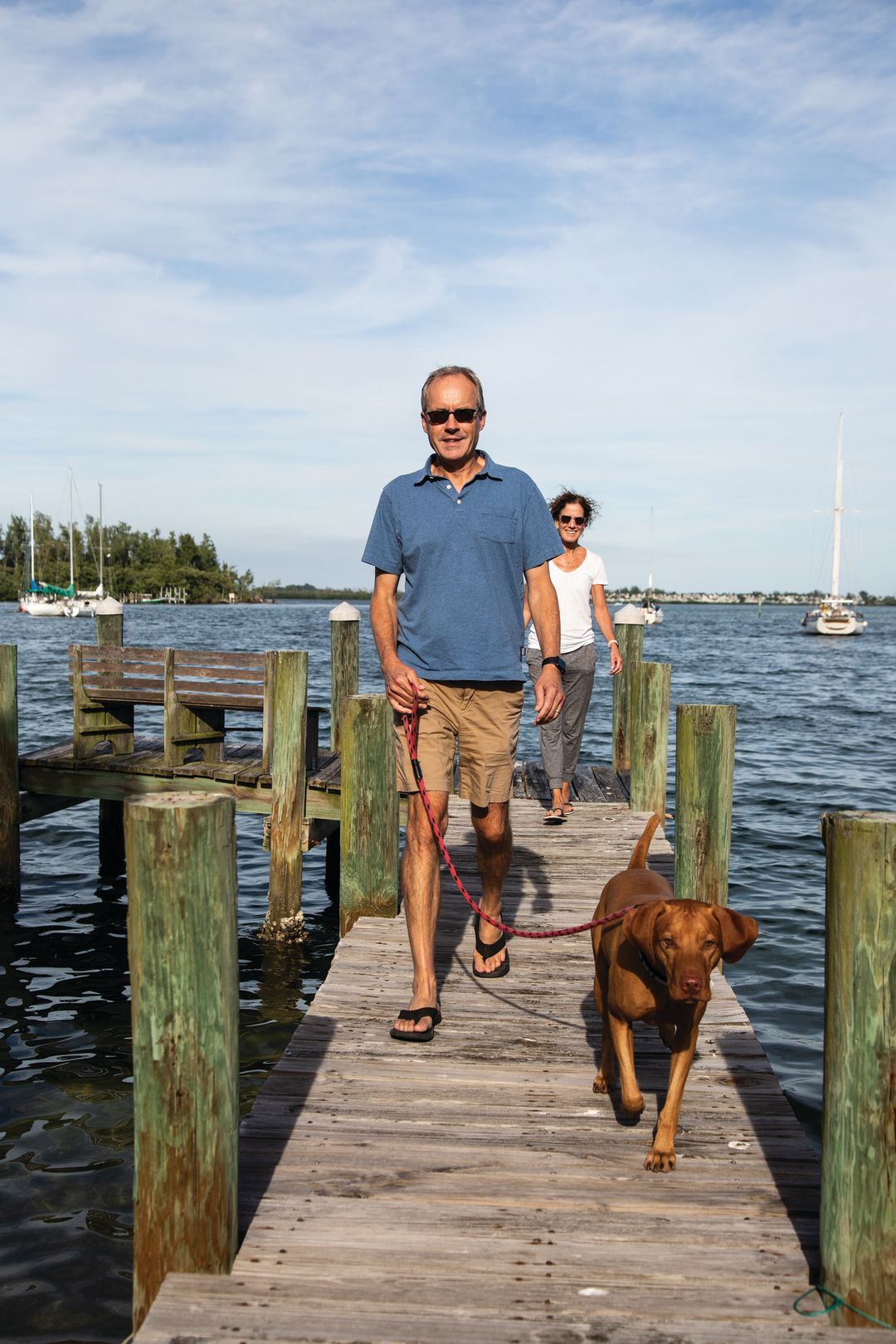
The neighborhood dock
Image: Jenny Acheson
But by the 1930s, Northerners and other vacationers had discovered Longbeach. Gordon and Lora Whitney, originally from Chicago, built 13 cottages right on the beach for tourists. At the time, there were only 261 permanent residents in the Village.
That number hasn’t changed too much. Today, there are 290 homes in the Village, and it remains a place where neighbors know one another from their front porches or walking their dogs. Many of the homes are humble, sweet and quirky, some of them along shell-lined alleyways that crunch underfoot. Quite a few of the Whitneys’ hand-cut cypress cottages from the ’30s and several of the 100-year-old, one-story coquina block homes made with cement, shell fragments and ancient mollusks have been lovingly cared for. They fit right in with an octagonal wood home on steel stilts and a purple house with yellow shutters and a pink door.
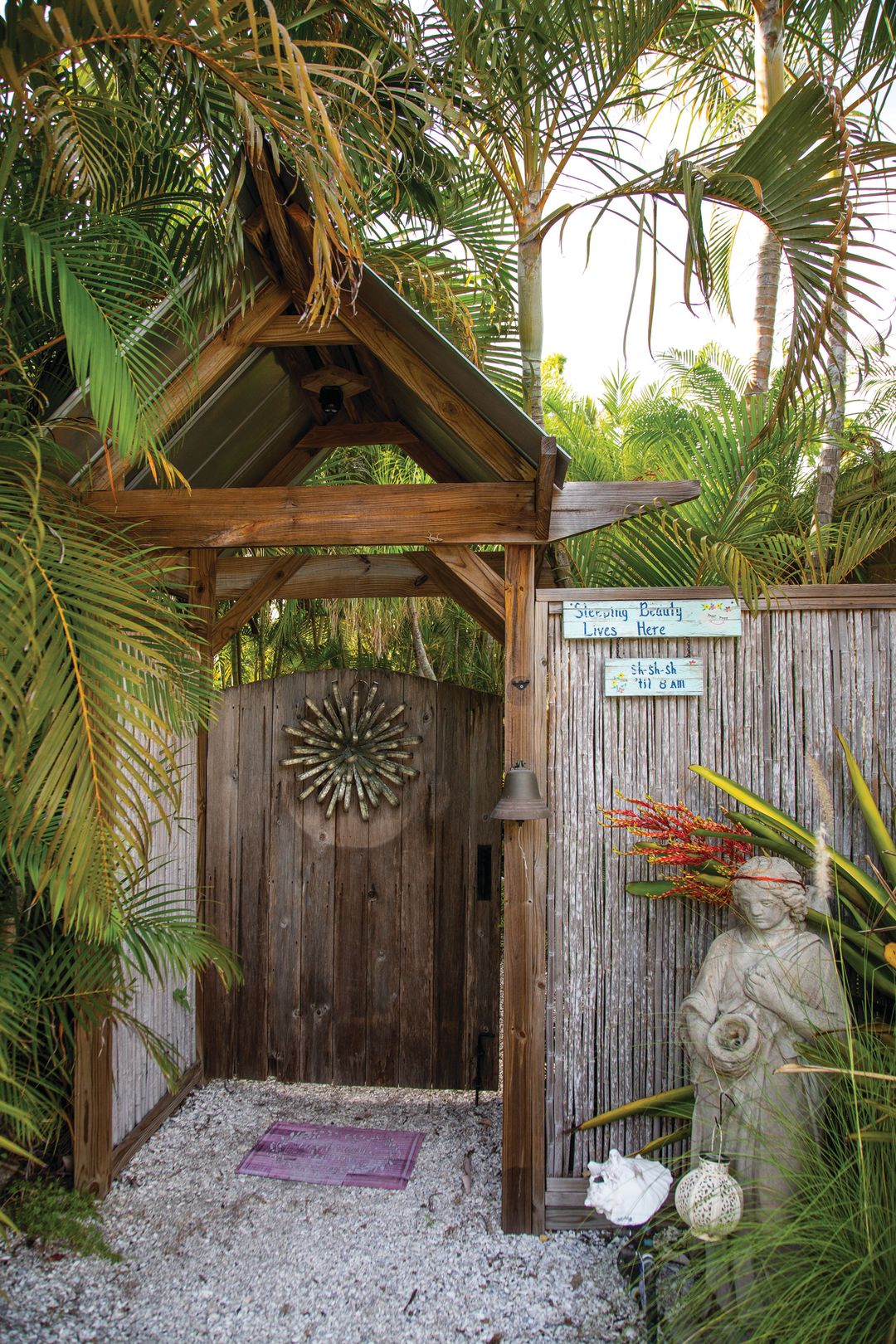
Homes have personality, evident in this handmade sign and entrance.
Image: Jenny Acheson
Other homes sport artful archway entrances behind sprawling bougainvillea. One cottage, a supposed princess' lair, wears a sign outside a wooden gate that says, “Sleeping Beauty Lives Here, sh-sh-sh ’til 8 a.m.” as a gentle reminder to passersby to keep it quiet. A mantra on a wooden post on Poinsettia Avenue says, “When all else fails, turn up the music and dance with your dog.” Waterfront access and docks make kayak ownership an obvious must. This is a place where going barefoot feels right, and the community directory even lists the names of everyone’s dog or cat.
But Longbeach Village, alas, is also changing, with significant residential and commercial development taking place—most of it in the last few years, says Michael Drake, the former president of the Longbeach Village Association and current president of the Longboat Key Historical Society. A tract of untouched land on Longboat Drive South made way in 2018 for a single-family home development called Banyan Beach Estates. It offered buyers seven 7,000- to -8,000-square-foot coastal Craftsman style houses to pick from. All lined up in a row, they’re a tad jarring in the irregular patchwork of homes that defines the Village. Locals dubbed them the Seven Sisters, and they each sold in the last few years for more than $1 million.
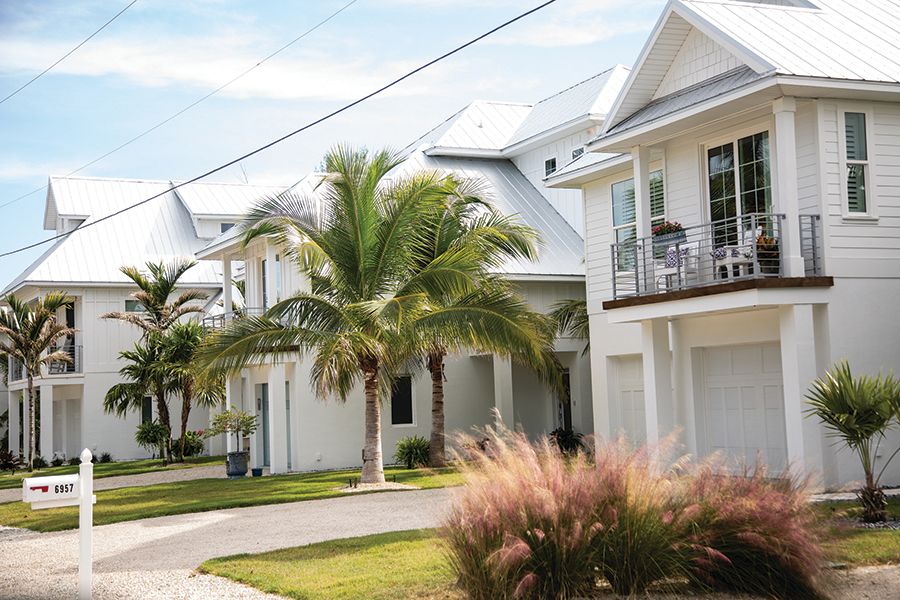
The "Seven Sisters," as locals call these new homes, each sold in the last few years for more than $1 million.
Image: Jenny Acheson
Another development in the works is The Preserve at Longbeach. The 2.3-acre site was purchased in 2017 for $1.85 million. The 12-home site is being built where two of the original Whitney cottages stood, one of them the former setting of the Longboat Key Center for the Arts. Lots in the Preserve range in size from 7,000 to 8,000 square feet and prices start at $1.3 million.
But Longbeach residents are speaking up, intent on preserving the character of their community. Drake says one of the original Whitney cottages will be moved and is slated to become the headquarters of the Longboat Key Historical Society. The other cottage was purchased by Ed Chiles, the owner of Longbeach restaurant Mar Vista, who will use it for his business.
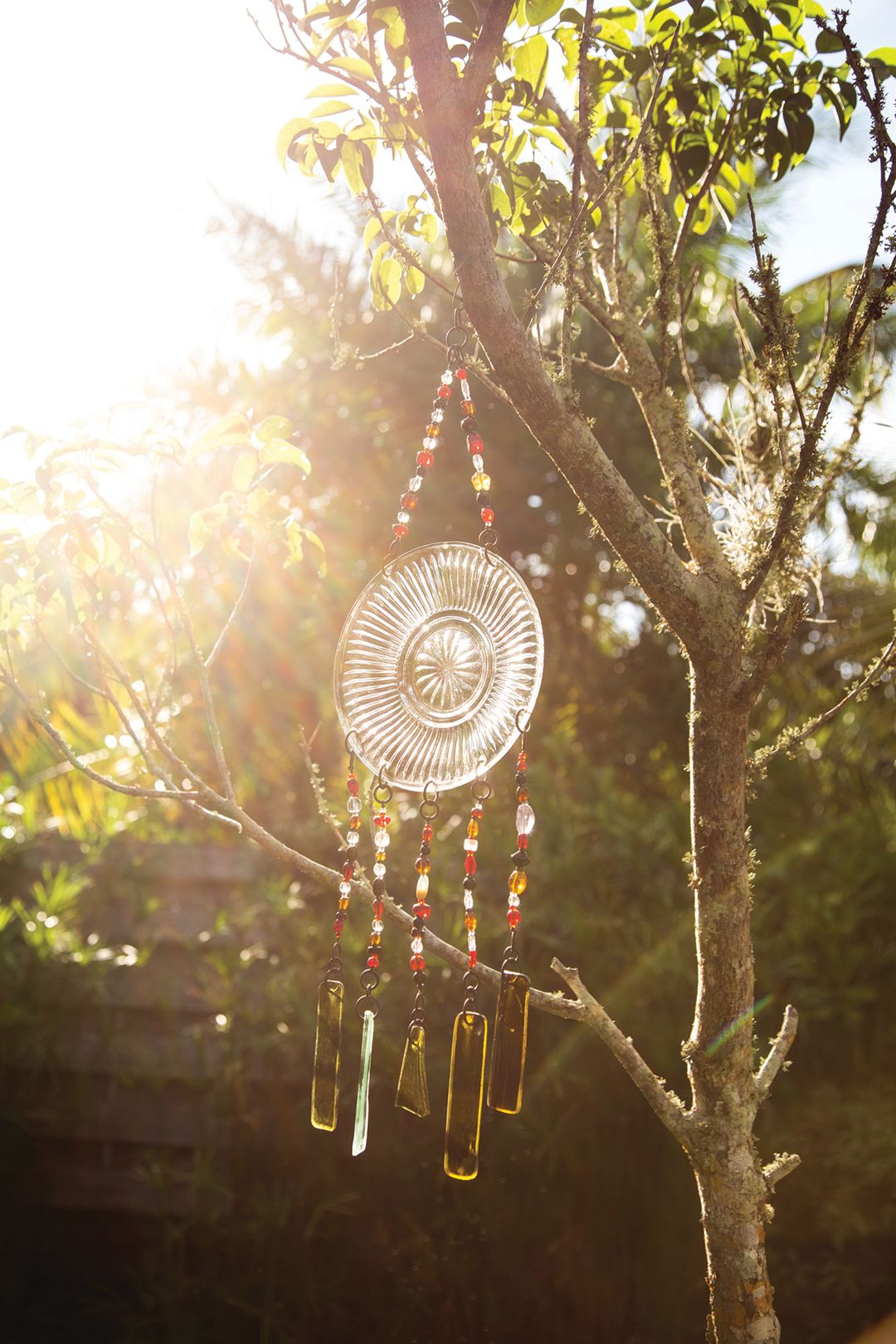
Random acts of art are a thing in Longbeach.
Image: Jenny Acheson
In 2016, residents stopped Floridays Development Co.’s proposal to build a 120-room, three-story hotel on the corner of Broadway Street, Longbeach Village’s main thoroughfare, and Gulf of Mexico Drive. In its place, the community has embraced the new restaurant Whitney’s, a rehabbed 1950s gas station on the corner, where they can grab a burger and a cocktail and sit in the shade of coconut palms with sandy tourists.
In 2019, when developers opened Shore restaurant and, right next door, Chiles finished his $2 million renovation and expansion of Mar Vista, customers began to park along residential streets. Night and day, residents could hear the cars. “It was the sound of the ‘beep beep’ from every car door as it locked and unlocked,” says Longbeach Village community leader Carla Rowan. “If any worker had to come by, like a plumber, they couldn’t park anywhere.’’
Led by Rowan, the community took action, and created a resident parking permit system that kicked off earlier this year to ensure restaurant staff and guests park in limited public parking spaces adjacent to the restaurants, as well as the businesses’ own private parking. The Village also isn’t big on short-term rentals. Regulations require a minimum three-month stay no more than once a year.
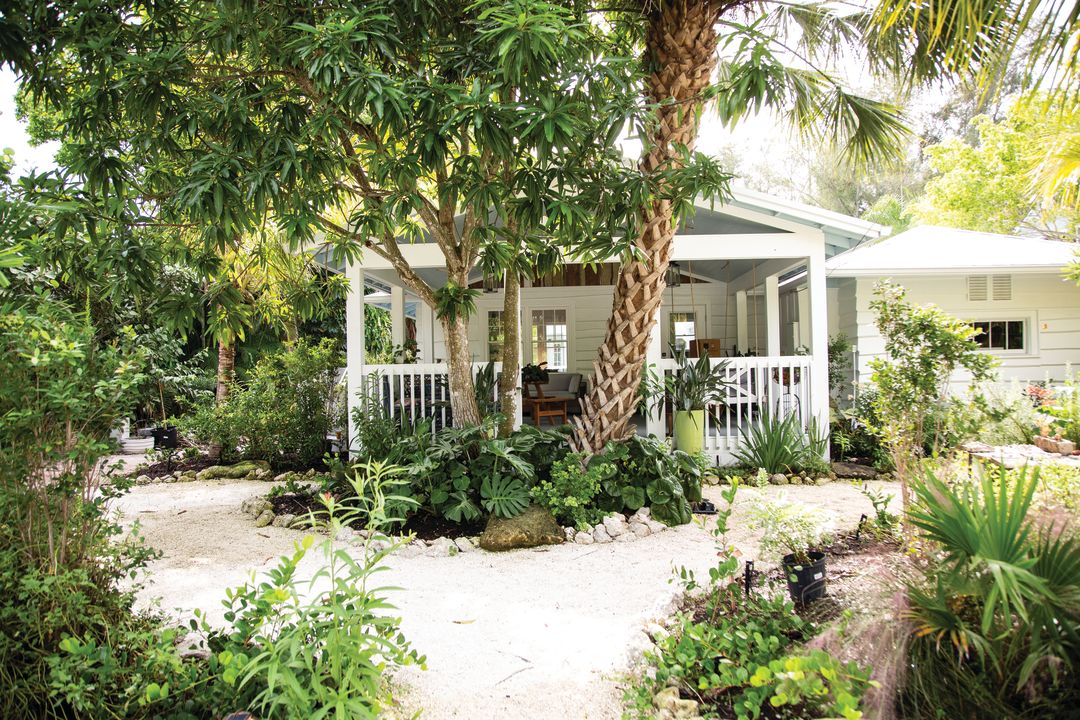
Front porches keep residents connected.
Image: Jenny Acheson
But even with all the resistance to large homes, vacation rentals and traffic—or maybe because of it—Longbeach real estate values are going up and the old cottages are coming down.
Longbeach resident and Michael Saunders & Company realtor Cindy Fischer knows the inventory. “The price range in Longbeach Village is anywhere from the high $500,000s right now—there are very few of those left—to closer to the $700,000s and millions. Newer inventory is going to be $1.4 million and up. Even some older homes have gone for over a million,” says Fischer. “The land values have gone up significantly, at least 50 percent in the last couple of years.”
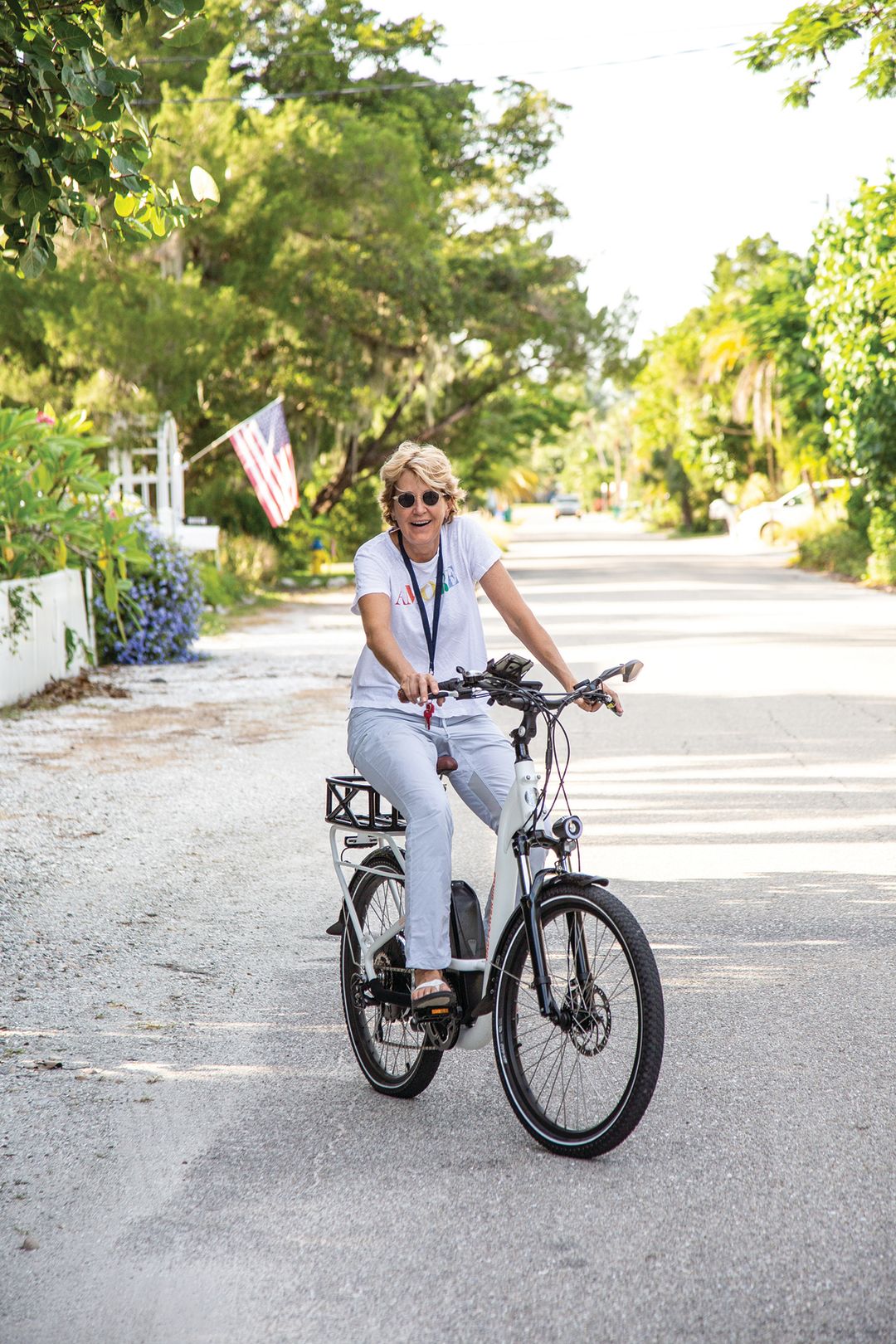
Biking along tree-lined streets
Image: Jenny Acheson
Prices have risen everywhere in Sarasota, of course, and it takes a special type of homebuyer to see the value in character and history rather than square footage and modern amenities. Longbeach residents can only hope that most of the new residents in their community are attracted by these more intrinsic values. If not, fair warning: They will have a cadre of fiercely loyal Village people who will try to convince them.
“We try to keep our neighborhood like it was in the ’40s and ’50s. When someone comes in and buys an old home, we hope they don’t tear it down, and we’ll save them even if it means moving them to another location,” Drake says.